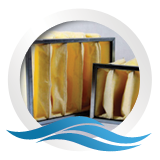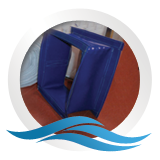Building upon the foundational understanding provided in The Science of Fishing: From Vessels to Virtual Adventures, this article explores the revolutionary role of data and technology in shaping sustainable and efficient fishery practices today. The integration of sophisticated data collection and analysis tools marks a new chapter in the evolution of fishing, bridging traditional expertise with cutting-edge innovation to foster healthier marine ecosystems and resilient fishing communities.
1. Introduction: From Traditional Techniques to Data-Driven Fishery Management
Historical fishing practices relied heavily on local knowledge, simple tools, and manual estimates, which often led to overfishing and ecosystem imbalance. These methods, while culturally rich, faced limitations in scalability and accuracy, especially as global demand for seafood increased. The transition from manual, experience-based techniques to technology-enhanced methods has been driven by the urgent need for sustainability and resource management.
Today, data-driven fishery management involves collecting vast amounts of information to inform decisions that balance economic gains with conservation goals. This shift not only improves efficiency but also ensures compliance with international regulations, helping to preserve marine biodiversity for future generations.
Table of Contents
- The Role of Data Collection in Modern Fisheries
- Advanced Data Analytics and Modeling in Fishery Decision-Making
- Real-Time Monitoring and Adaptive Management
- Integrating Technology into Fishery Governance and Policy
- Ethical and Practical Challenges of Data-Driven Fishery Management
- Future Perspectives: The Next Frontier in Data-Driven Fishery Management
- Connecting Back to the Broader Narrative
2. The Role of Data Collection in Modern Fisheries
Effective fishery management begins with comprehensive data collection. Modern fisheries gather diverse types of data, including catch volume, species composition, environmental parameters such as water temperature and salinity, and vessel movement patterns. These datasets enable stakeholders to understand fish stocks better and monitor ecosystem health.
Technologies facilitating this data collection are rapidly advancing. Sensors deployed on vessels measure environmental variables in real-time, while satellite tracking provides insights into vessel locations and activities across vast ocean spaces. The Internet of Things (IoT) further connects devices, creating an integrated network that offers continuous data streams.
However, gathering reliable data in diverse marine environments presents challenges, such as harsh weather conditions, remote locations, and varying technological infrastructure. Addressing these obstacles requires deploying robust equipment, training personnel, and developing standardized protocols to ensure data quality and consistency.
Examples of Data Types Collected
- Catch Data: species, quantity, size distribution
- Environmental Data: temperature, chlorophyll levels, ocean currents
- Vessel Data: GPS location, speed, fishing duration
3. Advanced Data Analytics and Modeling in Fishery Decision-Making
The advent of big data and machine learning algorithms has transformed how fisheries predict and manage fish stocks. By analyzing historical catch records alongside environmental data, predictive models can estimate future population trends with higher accuracy than traditional methods.
For example, researchers utilizing machine learning have developed models that forecast spawning periods for Atlantic cod, enabling fishery managers to adjust quotas dynamically and reduce overfishing risks. These models incorporate variables such as sea surface temperature, chlorophyll concentration, and migration patterns, providing a holistic view of ecosystem dynamics.
Case studies demonstrate that such data-driven approaches lead to more sustainable quotas, improved stock assessments, and better conservation outcomes. The integration of these analytics into decision-making frameworks represents a significant leap toward resilient fisheries management.
Examples of Predictive Analytics Impact
| Application | Outcome |
|---|---|
| Fish stock prediction models | More accurate quotas, reduced bycatch |
| Environmental impact assessments | Targeted conservation measures |
4. Real-Time Monitoring and Adaptive Management
Implementing real-time data feeds enables fishery managers to make immediate decisions, optimizing resource use and minimizing environmental impacts. Technologies such as satellite-based vessel monitoring systems (VMS) and automatic identification systems (AIS) provide continuous updates on vessel activities.
Automated alerts can now notify authorities of illegal, unreported, and unregulated (IUU) fishing activities, which pose significant threats to sustainable fisheries. These alerts are generated through anomaly detection algorithms analyzing vessel movement patterns and fishing effort data.
Adaptive management strategies leverage ongoing data feedback, allowing policies to evolve in response to changing environmental and stock conditions. This dynamic approach reduces the lag between data collection and management actions, fostering more resilient ecosystems.
Advantages of Real-Time Data Use
- Immediate detection of illegal activities
- Enhanced responsiveness to environmental changes
- Improved resource allocation and enforcement efficiency
5. Integrating Technology into Fishery Governance and Policy
Data transparency and sharing are critical for effective governance. Platforms that facilitate data exchange among governments, industry players, and scientists foster collaboration and informed decision-making. For instance, open-access databases enable stakeholders to access real-time stock assessments and environmental data, promoting accountability.
Smart regulatory frameworks built on data insights are emerging, utilizing machine-readable policies and digital licenses. Blockchain technology further enhances traceability, ensuring that catch data and supply chain information remain tamper-proof, thereby reducing fraud and illegal trade.
Such integrations support compliance with international agreements like the Marine Stewardship Council (MSC) standards and promote consumer confidence in sustainably sourced seafood.
6. Ethical and Practical Challenges of Data-Driven Fishery Management
Despite the benefits, deploying data-centric approaches raises concerns about data privacy, especially with sensitive vessel tracking information. Building stakeholder trust requires transparent data policies and secure systems.
Disparities in technological access between developed and developing regions can hinder global efforts. Equipping less-resourced fisheries with affordable, robust technologies is crucial to avoid widening the gap in sustainable practices.
Furthermore, ensuring data quality and standardization is essential. Inconsistent data can lead to flawed models and misguided policies. International cooperation on data standards is therefore vital for the integrity of fishery management systems.
7. Future Perspectives: The Next Frontier in Data-Driven Fishery Management
Emerging innovations promise to further revolutionize fisheries. AI-powered autonomous vessels equipped with advanced sensors could operate sustainably without human crews, conducting surveillance and data collection in real-time.
Genetic and environmental DNA (eDNA) analysis offers new avenues for stock assessment, allowing scientists to identify species presence and abundance from water samples without capturing fish. This non-invasive method enhances monitoring efficiency and accuracy.
Citizen science initiatives, involving local fishers and community members in data collection, foster greater engagement and democratize resource management. Digital platforms enable rapid reporting of sightings and environmental conditions, enriching datasets for analysis.
Innovative Technologies on the Horizon
- AI-powered autonomous fishing vessels
- eDNA-based stock assessments
- Blockchain-enabled supply chain traceability
- Community-driven data collection platforms
8. Connecting Back to the Broader Narrative: Enhancing the Science of Fishing
As demonstrated throughout this discussion, the infusion of data and technology not only refines fishery management but also deepens our understanding of marine ecosystems beyond what traditional methods could achieve. The synergy between technological innovation and cultural practices forms the foundation for a sustainable future.
The progress from vessels navigating based on experience to sophisticated virtual monitoring and data analytics exemplifies the ongoing evolution of fishing as a science. By embracing these advancements, we reinforce the continuity of sustainable practices—ensuring that fishing remains both an art and a science, rooted in tradition yet powered by innovation.
„Harnessing data transforms fishing from a centuries-old craft into a resilient, science-based industry capable of safeguarding marine life for generations to come.“


